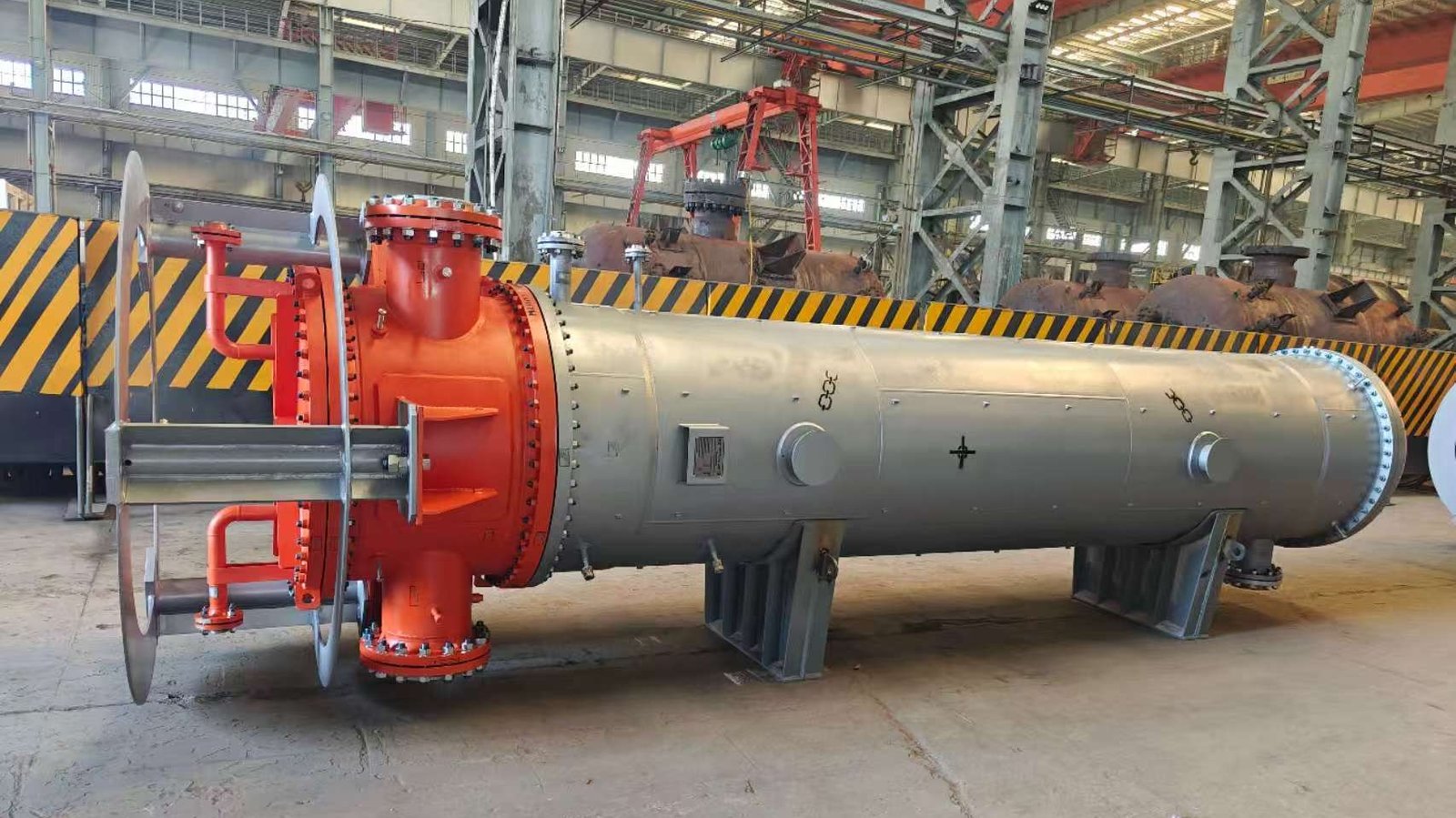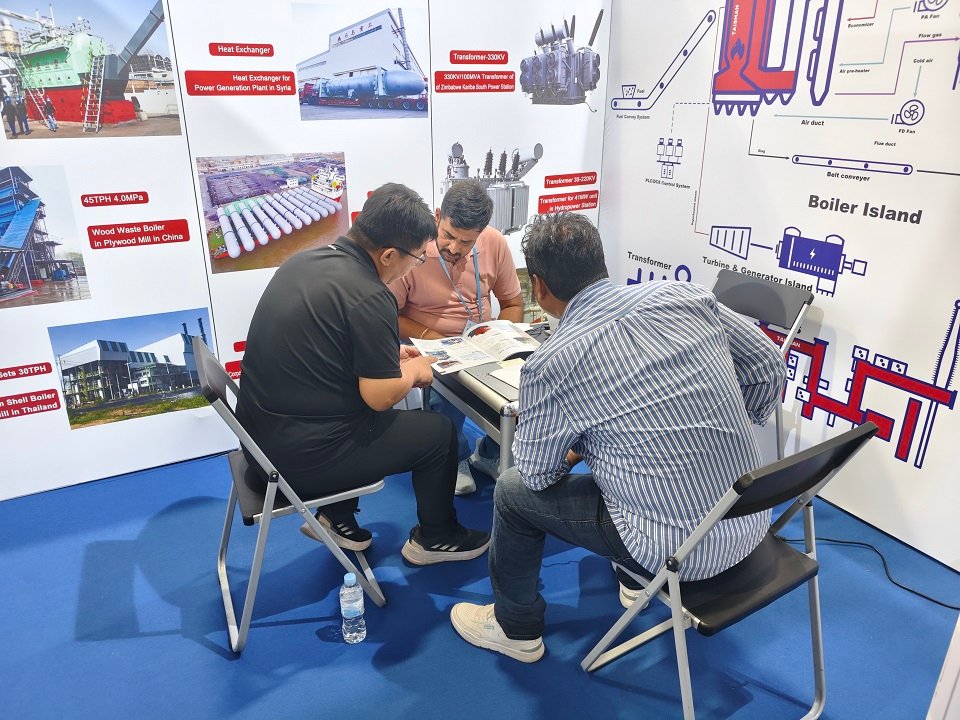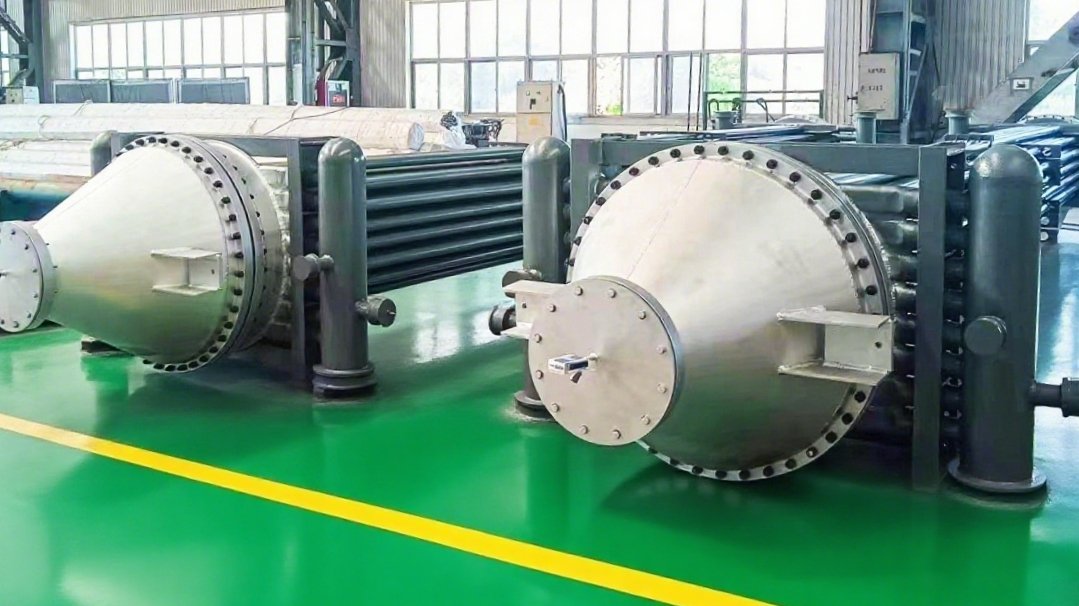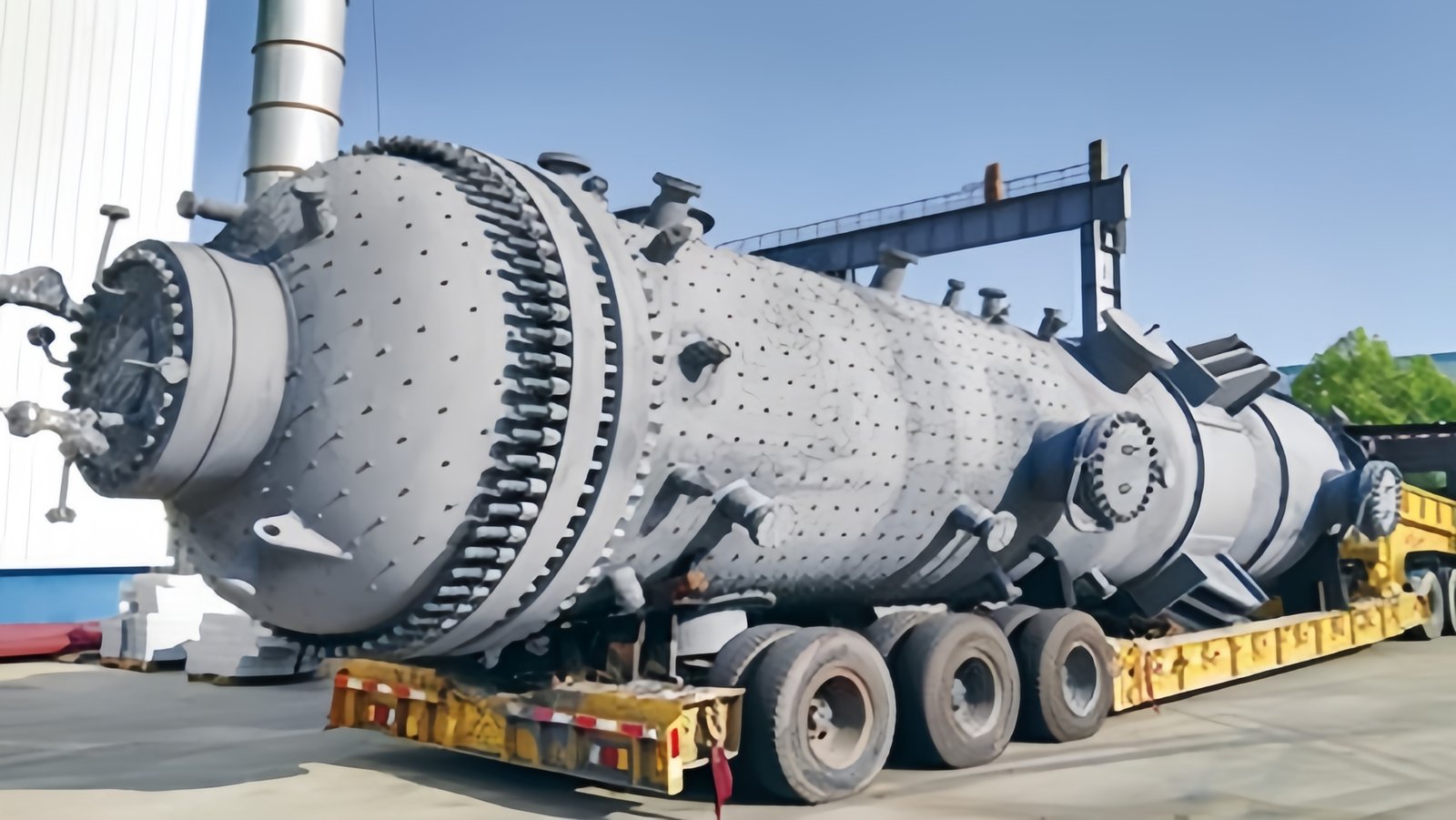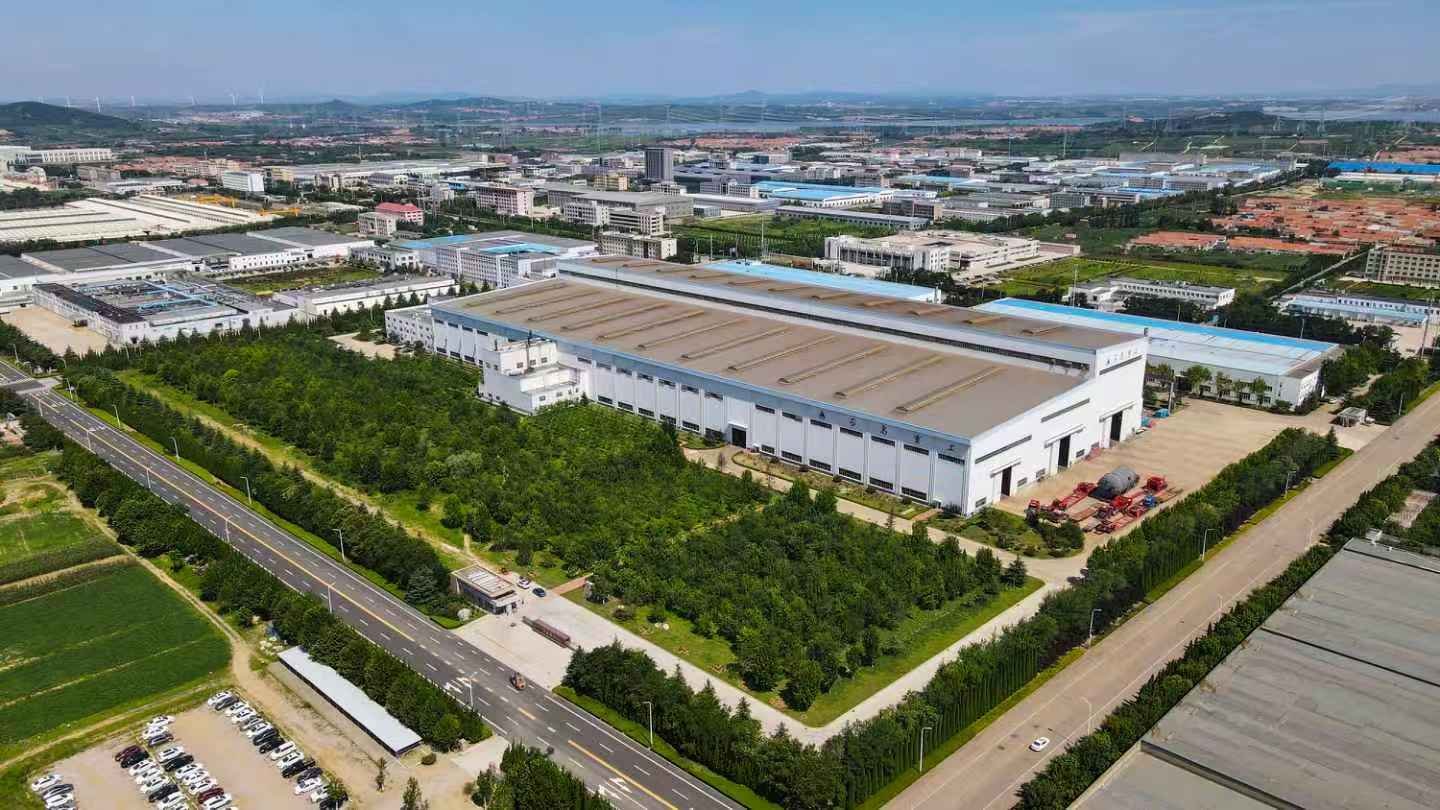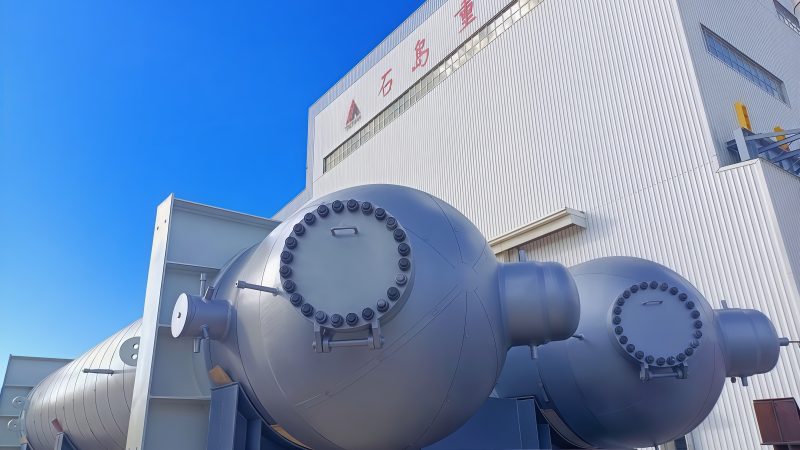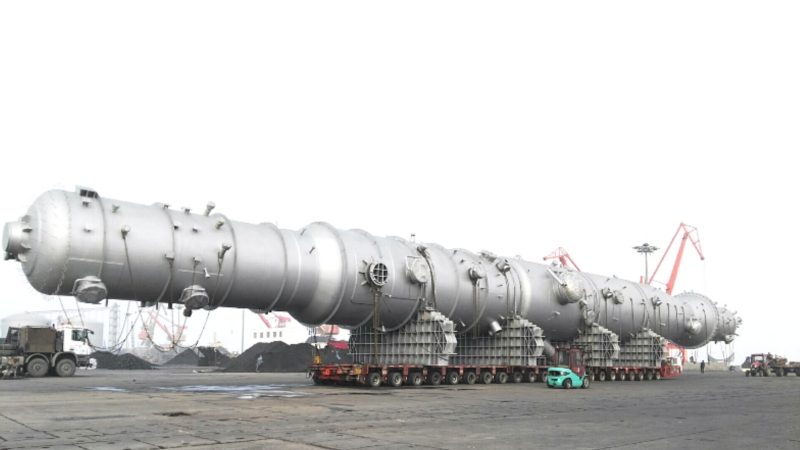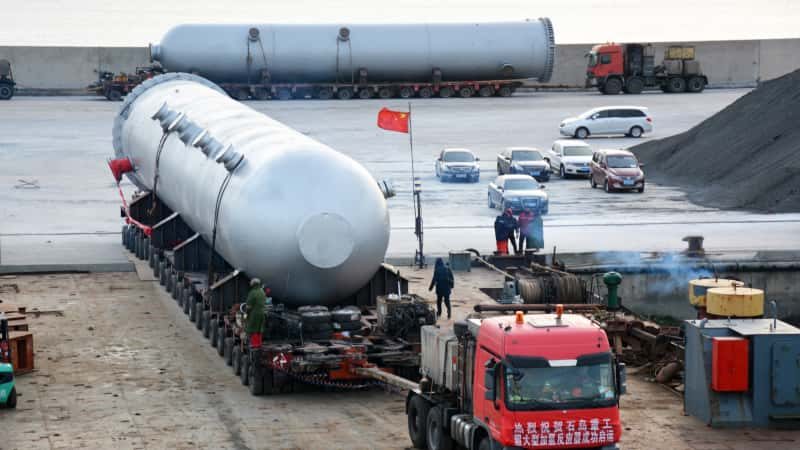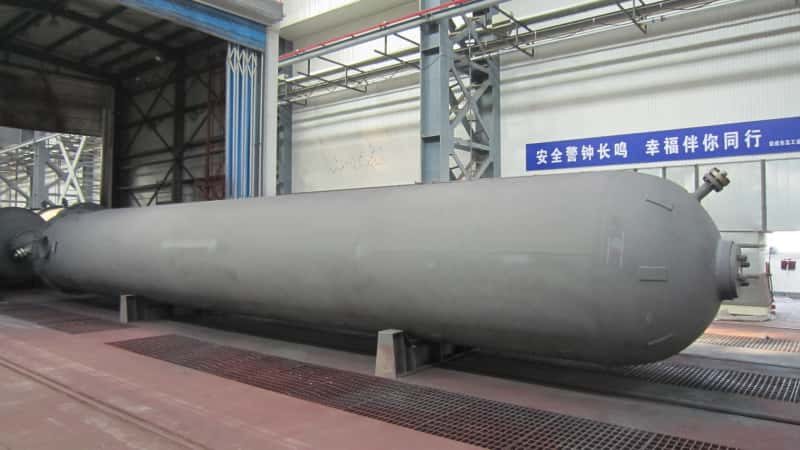In many chemical, petrochemical, and gas processing operations, valuable solvents, reagents, or hydrocarbons are lost if not properly recovered. This leads to higher raw material costs, environmental emissions, and non-compliance with increasingly strict regulatory standards. One of the most effective and essential solutions to this challenge is the use of a Recovery Tower & Column—an engineered system designed specifically to reclaim valuable components from process streams. Without it, companies face increased operational costs and serious sustainability concerns.
A Recovery Tower & Column is a vertical vessel used to recover valuable chemical components—such as solvents, unreacted gases, or light hydrocarbons—from process or waste streams through distillation or absorption. It functions by separating target compounds based on their volatilities, often employing trays or packing to enhance phase interaction. Widely used in solvent recovery, ammonia stripping, and gas purification, Recovery Towers significantly reduce waste, improve material efficiency, and lower environmental impact.
Whether you are dealing with volatile organic compound (VOC) emissions, solvent reuse, or chemical recycling, a properly designed and maintained Recovery Tower & Column can be a critical asset to your production process. The following guide will walk you through its working principles, system types, selection criteria, and maintenance practices to help you achieve optimal recovery and compliance.
What Is the Role of a Recovery Tower & Column in Industrial Process Recovery?
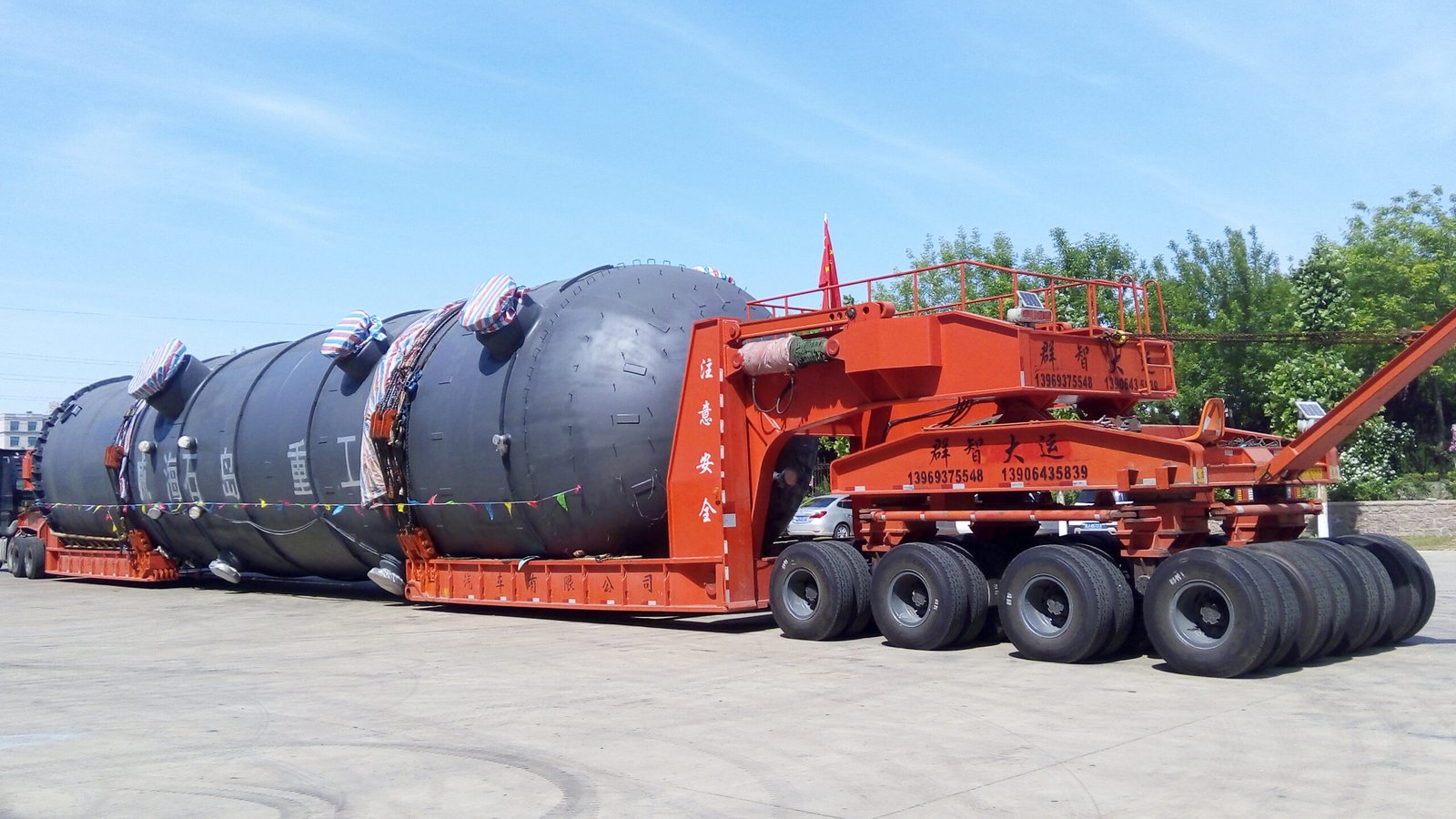
Industrial processes inevitably generate byproducts, unreacted feedstocks, or waste materials that, if not managed properly, lead to environmental emissions, energy losses, and raw material inefficiencies. Fortunately, Recovery Towers and Columns play a pivotal role in capturing valuable components—like solvents, light hydrocarbons, steam, and monomers—from waste streams or recycle loops. Without recovery systems, industries would suffer from increased raw material costs, regulatory penalties, and lower profitability. These columns enable sustainable and cost-effective operations by maximizing material reuse and minimizing waste.
A Recovery Tower or Column is a specialized distillation or separation unit used in industrial processes to reclaim valuable or volatile substances—such as solvents, light hydrocarbons, monomers, or water—from process off-gases, spent streams, or recycle flows. It uses vapor-liquid equilibrium principles to separate and recover usable materials based on boiling points, allowing them to be purified and reused within the same or other processes.
By integrating recovery systems into production lines, industries such as petrochemicals, pharmaceuticals, textiles, and food manufacturing not only reduce costs but also meet strict environmental and safety regulations.
Recovery columns are only used to treat wastewater.False
Recovery towers are used for reclaiming solvents, hydrocarbons, vapors, steam, and other materials—not just in wastewater treatment, but across various industrial processes.
Core Function and Operating Principle of Recovery Towers
Recovery towers operate on the same fundamental principles as fractionation columns—separating mixtures based on boiling point differentials and relative volatility—but they are designed specifically for reclaiming and recycling process streams.
| Function | Description |
|---|---|
| Solvent Recovery | Separating and purifying solvents from mixtures or waste streams for reuse |
| Vapor Recovery | Condensing and separating volatile components from off-gases |
| Monomer or Reagent Recovery | Reclaiming unreacted chemicals for recycling into reactors |
| Steam Recovery | Condensing and redirecting thermal energy or clean water |
Recovery columns can be placed at the end of process lines, after reactors, or in vent gas systems, depending on the industrial layout.
Common Applications by Industry
| Industry | Recovery Tower Application | Recovered Material |
|---|---|---|
| Petrochemical | Light hydrocarbon recovery | Propane, butane, pentane |
| Pharmaceutical | Solvent reclamation | Ethanol, acetone, methanol |
| Textile & Dye | VOC abatement & reuse | Toluene, xylene |
| Food Processing | Alcohol or flavor recovery | Ethanol, vanilla extract |
| Polymer Production | Monomer recycling | Styrene, MMA, butadiene |
| Paints & Coatings | Solvent vapor recovery | MEK, NMP, acetates |
Key Design Features of Recovery Columns
| Design Element | Importance | Typical Configuration |
|---|---|---|
| Tray or Packed Internals | Maximizes vapor-liquid contact | Sieve trays, structured packing |
| Condensers & Reboilers | Provides energy to drive separation | Air-cooled or water-cooled |
| Vacuum Systems | Lowers boiling points for heat-sensitive substances | Vacuum pumps, ejectors |
| Sensors & Analyzers | Ensure product purity | GC, NIR, FTIR |
| Material Compatibility | Prevents corrosion and contamination | Stainless steel, PTFE lining |
Recovery towers operate under the same conditions as crude distillation towers.False
Recovery towers often operate under lower pressures, sometimes under vacuum, and at lower temperatures to preserve sensitive materials.
Recovery Column Performance Metrics
Recovery columns are evaluated based on efficiency, purity, and economic benefit. Here’s a breakdown:
| Performance Metric | Target | Measurement Method |
|---|---|---|
| Recovery Yield (%) | 90–99+% | Mass balance and product analysis |
| Product Purity (%) | 95–99.9% | Gas chromatography, spectroscopy |
| Energy Efficiency (kWh/kg recovered) | Minimized | Energy meter, heat integration analysis |
| Turnaround Frequency | Every 1–3 years | Based on fouling or corrosion rates |
| Payback Time (ROI) | <2 years | CAPEX vs. raw material cost savings |
Real-World Example: Solvent Recovery in Pharma Plant
Case: A pharmaceutical plant uses ethanol and methanol in synthesis.
Challenge: High loss of solvents into waste streams.
Solution: Installed recovery column with vacuum operation and structured packing.
Outcome:
- 98.7% solvent recovery rate
- Reused solvents in next batch
- Annual savings: \$600,000+
- Reduced VOC emissions by 92%
Advanced Recovery System Features
| Feature | Benefit |
|---|---|
| Digital Twin Modeling | Predicts column behavior and simulates failures |
| Reflux Ratio Control System | Maximizes recovery while reducing energy cost |
| Thermal Integration (Heat Recovery) | Reuses energy from reboiler or condenser |
| Continuous Monitoring with AI Diagnostics | Detects fouling, overloads, or poor separation early |
Table: Recovery Column vs. Fractionation Column
| Feature | Recovery Column | Standard Fractionation Column |
|---|---|---|
| Goal | Reclaim usable substances | Produce multiple refined products |
| Feed Quality | Spent, dilute, off-spec streams | Fresh, mixed crude/process feed |
| Operating Pressure | Often vacuum or low | Often atmospheric or pressurized |
| Temperature Range | 40–200°C | 150–400°C |
| Common Use | Recycling and waste minimization | Bulk separation and distillation |
Recovery towers cannot achieve high product purity.False
With proper design and controls, recovery towers can achieve product purities above 99% for many solvents and chemicals.
Maintenance Considerations for Recovery Columns
Because recovery columns often deal with contaminated, spent, or variable streams, they require:
- Frequent fouling checks
- Corrosion-resistant materials
- Routine sampling and purity verification
- Condenser/reboiler cleaning
- Pressure and temperature sensor calibration
| Maintenance Area | Common Issue | Maintenance Frequency |
|---|---|---|
| Trays/Packing | Scaling or blockage | Every 12–18 months |
| Reboiler | Buildup or coking | Yearly |
| Condenser | Heat transfer drop | 6–12 months |
| Column Shell | Pitting or corrosion | 2–3 years |
| Control Valves | Solvent wear | Semi-annual inspection |
Environmental & Economic Benefits
Implementing a recovery tower contributes significantly to sustainability goals and cost savings:
- Reduces raw material consumption
- Lowers hazardous waste disposal
- Complies with emission standards (EPA, EEA, etc.)
- Improves plant yield and profit margins
- Minimizes environmental impact
Conclusion
A recovery tower or column is a critical asset in modern process industries, enabling the reclamation of solvents, gases, and valuable components from streams that would otherwise be wasted. By integrating recovery into production systems, plants enhance profitability, reduce environmental impact, and comply with stringent regulatory demands. Whether in petrochemicals, pharma, or food, recovery columns turn waste into value through the power of separation.
How Does a Recovery Tower & Column Function to Reclaim Valuable Components?
In industrial processing, waste streams often contain valuable materials—such as solvents, hydrocarbons, water, or unreacted monomers—that, if not recovered, result in lost revenue, higher raw material costs, and environmental liabilities. This inefficiency can be devastating for profit margins and compliance. The Recovery Tower (or Column) is a key solution. By applying thermodynamic separation principles, it reclaims these materials, purifies them, and makes them reusable, saving millions annually in raw material and waste treatment costs. Understanding how this system functions is critical for anyone in process engineering, plant operations, or industrial sustainability.
A Recovery Tower or Column functions by using distillation-based separation, where process off-gases or spent liquids are introduced into a vertically stacked vessel. Inside, the tower establishes a temperature gradient, causing volatile components to vaporize and rise while heavier components condense and fall. Through successive vapor-liquid contact stages—facilitated by trays or packing—valuable materials like solvents, gases, or steam are separated and recovered for reuse, minimizing waste and improving process efficiency.
This mechanism transforms what would otherwise be discarded into reusable resources—integral to both economic and environmental performance in modern industry.
Recovery columns can only separate water from process streams.False
Recovery towers are used for reclaiming a wide range of volatile components, not just water, including solvents, hydrocarbons, monomers, and other valuable chemicals.
Step-by-Step: How a Recovery Tower Reclaims Valuable Components
A recovery tower follows the same thermodynamic foundation as traditional distillation but focuses specifically on separating low-concentration, high-value volatiles from dilute or waste streams.
1. Feed Introduction
The feed stream—often containing spent solvents, monomer residues, or light hydrocarbons—is introduced into the column at a designated feed tray or mid-section.
| Feed Source | Typical Contents |
|---|---|
| Reactor vent gases | Unreacted monomers, light solvents |
| Wastewater streams | VOCs, residual organics |
| Evaporators | Volatile solvents, moisture |
| Scrubber bottoms | Acids, amines, organic solvents |
2. Thermal Input: Reboiler Operation
The reboiler at the column base heats the liquid, generating vapor. This vapor contains more volatile components which then rise through the column.
- Typically uses steam or electrical heating
- Temperature carefully controlled to prevent decomposition of sensitive chemicals
3. Vapor–Liquid Contact: Internal Separation
As vapor rises, it comes into contact with descending liquid on trays or packing. This facilitates mass and heat transfer.
| Column Internals | Role |
|---|---|
| Sieve Trays | Promote mixing and stage-wise separation |
| Structured Packing | Offers high surface area, ideal for low-pressure recovery |
| Liquid Distributors | Ensure uniform feed distribution over packing |
Here, high-boiling components condense, and light components stay in vapor form and continue upward.
4. Top Section: Condensation & Recovery
At the top of the column, a condenser cools and condenses the overhead vapor. Recovered materials are then:
- Stored for reuse in the same process
- Sold or recycled
- Further purified through polishing steps
| Recovered Material | End Use |
|---|---|
| Ethanol, methanol | Solvent reuse |
| Propane, butane | Fuel or feedstock |
| Acetone, MEK | Solvent for cleaning, coatings |
| Monomers (styrene, MMA) | Recycled into polymerization |
5. Bottom Section: Waste Removal
The bottom stream contains heavier or non-volatile residues, often discharged, neutralized, or incinerated.
Technical Conditions for Optimal Recovery
| Parameter | Typical Range | Importance |
|---|---|---|
| Operating Pressure | Vacuum (10–200 mmHg) or slight pressure | Lowers boiling points for energy savings |
| Temperature | 40–180°C | Based on component volatility |
| Reflux Ratio | 1.5–5.0 | Controls purity of recovered stream |
| Number of Stages | 10–40 | Determines separation sharpness |
| Material Construction | SS316, Hastelloy, PTFE-lined | Handles corrosive or reactive streams |
Vacuum operation in recovery towers has no advantage over atmospheric pressure.False
Vacuum reduces boiling points, making it easier and safer to separate heat-sensitive or high-boiling components in recovery operations.
Example: Solvent Recovery from Coating Industry Waste Stream
| Parameter | Value |
|---|---|
| Feed | 80% water, 15% ethanol, 5% MEK |
| Column Pressure | 150 mmHg |
| Recovered Overhead | 99.5% ethanol/MEK blend |
| Bottom Waste | Contaminated water and solids |
| Yield | 95.6% of usable solvent recovered |
| Energy Cost Reduction | 32% using vacuum distillation with heat integration |
Recovery Process Diagram Table
| Stage | Function | Component Behavior |
|---|---|---|
| Feed Entry | Introduces waste or process stream | Liquid containing mixed components |
| Reboiler | Heats mixture to boiling | Light volatiles vaporize |
| Column Trays/Packing | Multi-stage separation | Vapor rises, liquid descends |
| Condenser | Cools overhead vapor | Condenses valuable light volatiles |
| Recovered Stream | Collected and stored | Reused or sent for further processing |
| Bottoms | Discarded or treated | Heavier waste components |
Control and Monitoring in Recovery Columns
To maintain separation quality and equipment safety, recovery towers use:
| Instrumentation | Purpose |
|---|---|
| Temperature sensors (top, feed, bottom) | Monitor boiling zones and gradients |
| Pressure transmitters | Maintain vacuum or pressurized conditions |
| Gas chromatographs (GC) | Analyze purity of recovered product |
| Level controllers | Balance reflux and bottom drainage |
| Reflux ratio controllers | Adjust purity dynamically |
Advanced systems may use Model Predictive Control (MPC) and AI-based diagnostics to fine-tune performance in real time.
Recovery towers are difficult to control and not suited for automated systems.False
Modern recovery columns can be fully automated using DCS, PLCs, and advanced control strategies including AI-based predictive control.
Energy Integration and Sustainability
Recovery towers are increasingly integrated with heat exchangers, economizers, and heat pumps to minimize energy use.
| Strategy | Energy Savings |
|---|---|
| Heat integration with pre-heaters | 15–25% |
| Reboiler duty optimization via pinch analysis | 20–30% |
| Waste heat recovery from overhead | 10–20% |
This aligns with green manufacturing, reducing both emissions and utility costs.
Conclusion
A recovery tower functions as a specialized distillation unit that captures and reclaims valuable components from dilute, spent, or off-gas streams by leveraging vapor-liquid equilibrium and precise thermal control. Through strategic feed introduction, staged separation, and smart reboiler-condenser operation, industries recover high-value materials for reuse, boosting sustainability and profitability. The use of advanced automation and energy integration further enhances the efficiency of recovery systems across sectors.
What Are the Different Types of Recovery Tower & Column Used in Industry?
In industrial manufacturing, efficient resource utilization and emissions control are essential. However, many processes still result in valuable materials being lost in waste streams—solvents, gases, monomers, steam, and VOCs—leading to economic losses and regulatory risks. This is where Recovery Towers and Columns play a transformative role. Yet, different applications demand different designs. Selecting the wrong type of recovery column can lead to inefficiencies, poor recovery rates, or even product contamination. Conversely, choosing the right one ensures maximum reclaim value, regulatory compliance, and process sustainability.
The different types of Recovery Towers and Columns used in industry include Solvent Recovery Columns, Steam Stripping Columns, Gas Recovery Columns, Azeotropic and Extractive Distillation Columns, Vacuum Recovery Columns, Multi-Effect Recovery Towers, and Hybrid Columns. Each is specialized for the recovery of specific substances like solvents, volatile gases, steam, or monomers from process or waste streams using thermal or pressure-based separation methods.
Understanding these types allows engineers and operators to choose recovery solutions tailored to feed composition, component volatility, purity requirements, and operational costs.
All recovery towers are designed the same way and function identically.False
Recovery towers vary significantly in design and function depending on the target material being recovered, such as solvents, gases, steam, or monomers.
1. Solvent Recovery Columns
Function:
Reclaims organic solvents (e.g., ethanol, methanol, acetone) from dilute process streams or vapor vents.
Applications:
- Pharmaceutical and fine chemical plants
- Paint and coatings industries
- Printing and textile sectors
| Key Features | Notes |
|---|---|
| Operates under vacuum or atmospheric pressure | Preserves heat-sensitive solvents |
| Uses trays or structured packing | For high mass transfer efficiency |
| Often integrated with condensers and scrubbers | For purity and emission control |
Typical Recovered Solvents:
- Acetone
- Ethanol
- Methanol
- Toluene
- Methyl Ethyl Ketone (MEK)
Solvent recovery columns can only operate under atmospheric pressure.False
Solvent recovery columns often operate under vacuum to lower boiling points and prevent degradation of heat-sensitive compounds.
2. Steam Stripping Columns (Strippers)
Function:
Removes volatile components from liquid waste streams using live steam injection.
Applications:
- Wastewater treatment
- Amine regeneration in gas treatment
- Fertilizer production
| Parameter | Description |
|---|---|
| Stripping Agent | Saturated steam |
| Target Components | VOCs, NH₃, H₂S, phenols |
| Design Type | Tray or packed, often tall columns |
Typical Industrial Use:
- Stripping ammonia from urea condensates
- Removing volatile organics from industrial wastewater
Steam stripping is unsuitable for organic recovery.False
Steam stripping is highly effective for recovering and removing organic compounds and volatiles from wastewater and process streams.
3. Gas Recovery Columns
Function:
Separates and recovers valuable gases such as methane, propane, butane, and hydrogen from off-gas streams.
Applications:
- Natural gas processing
- Syngas separation
- Petrochemical vent recovery
| Column Type | Typical Operation |
|---|---|
| Cryogenic Column | Operates at -100 to -160°C |
| Absorber/Stripper Combo | Uses solvents like amines or glycols |
| Pressure Swing Distillation | Used for light hydrocarbons or hydrogen |
Example Use Case:
Recovering hydrocarbons from flare gas to reduce emissions and capture fuel.
4. Azeotropic & Extractive Distillation Columns
Function:
Breaks azeotropes or difficult separations using a third component (entrainer or solvent).
Applications:
- Ethanol-water dehydration
- Acetone-methanol separation
| Distillation Type | Description |
|---|---|
| Azeotropic | Entrainer changes relative volatility |
| Extractive | Solvent modifies intermolecular interaction |
Common Entrainer Examples:
- Benzene (for ethanol)
- Propylene glycol
- Diethylene glycol
These columns often work in tandem with rectifying sections or secondary recovery stages.
Azeotropic mixtures cannot be separated industrially.False
With azeotropic or extractive distillation techniques, many industrial azeotropes can be separated and valuable components recovered.
5. Vacuum Recovery Columns
Function:
Separates high-boiling or thermally sensitive components under reduced pressure to lower boiling points.
Applications:
- Recovery of high-molecular-weight organics
- Plasticizer and fragrance recovery
- Deodorization processes
| Key Benefits | Description |
|---|---|
| Low thermal degradation | Ideal for sensitive chemicals |
| Lower energy input | Reduced boiling temperature |
| Often used with thin film evaporators | Enhances mass transfer |
Typical Operating Pressure:
30–100 mmHg (via vacuum pumps or ejectors)
6. Multi-Effect Recovery Towers
Function:
Utilizes a series of distillation units where vapor from one effect is reused in the next to minimize energy consumption.
Applications:
- High-volume solvent recovery
- Steam and alcohol recovery from fermentation
| Effect Count | Benefit |
|---|---|
| 2–4 stages | 30–60% energy savings |
| Heat reuse | Improves thermal efficiency |
Used extensively in:
- Distilleries
- Food processing
- Bulk chemical manufacturing
7. Hybrid Recovery Columns
Function:
Combines multiple separation techniques such as reactive distillation + recovery or adsorption + stripping in one column.
Applications:
- Complex petrochemical processes
- Polymeric reaction loops
- Multicomponent recovery
| Technology Integration | Purpose |
|---|---|
| Reaction + Distillation | Converts and recovers in one step |
| Adsorption + Thermal Stripping | Captures VOCs, then desorbs for reuse |
Example:
- Reactive recovery of methyl acetate in esterification
Hybrid recovery columns cannot handle complex separation tasks.False
Hybrid columns are specifically designed for handling complex separation or recovery tasks that involve multiple components or simultaneous reactions.
Comparison Table: Recovery Column Types
| Column Type | Target Component | Operating Mode | Typical Industry |
|---|---|---|---|
| Solvent Recovery Column | Organic solvents | Vacuum/atmospheric | Pharma, coatings, chemical |
| Steam Stripper | VOCs, ammonia | Atmospheric with steam | Wastewater, fertilizer |
| Gas Recovery Column | Light gases | Cryogenic or absorption | Oil & gas, petrochemical |
| Azeotropic/Extractive | Azeotropes | Entrainer-assisted | Ethanol production, pharma |
| Vacuum Recovery Column | Heat-sensitive organics | Low pressure | Fragrances, resins |
| Multi-Effect Tower | Alcohols, volatiles | Cascaded thermal | Distilleries, bulk chemical |
| Hybrid Recovery Column | Complex organics | Multi-mode | Polymer, specialty chemicals |
Key Design Differences by Type
| Feature | Solvent Column | Stripper | Gas Recovery | Azeotropic | Vacuum |
|---|---|---|---|---|---|
| Internal | Trays or packing | Trays | Structured packing | Trays | Film or packing |
| Pressure | Vacuum/atm | Atm/low | Cryo/high | Atm | Low |
| Heat Input | Reboiler | Steam | External chillers | Reboiler + solvent | Reboiler |
| Condenser Type | Shell-tube/air | Often air | Cryogenic or solvent | Multiple | Low-temp |
Conclusion
Recovery towers and columns come in a wide range of specialized designs to meet the varied demands of different industries. Whether you’re recovering solvents, gases, VOCs, steam, or even monomers, selecting the correct type—solvent column, steam stripper, gas recovery, azeotropic, vacuum, or hybrid—is essential for process efficiency, material reuse, and environmental compliance. Understanding the function, configuration, and application of each type ensures maximum recovery yield with minimum energy and operating cost.
What Factors Should Be Considered When Designing or Selecting a Recovery Tower & Column?
Choosing or designing the wrong recovery tower can be extremely costly for industrial operations—resulting in poor recovery yields, energy waste, solvent losses, frequent downtime, or even product contamination. Whether you’re reclaiming solvents, vapors, hydrocarbons, or steam, the recovery column must be precisely matched to the characteristics of the stream and your process goals. Fortunately, when engineered correctly, a recovery tower can reduce raw material consumption by up to 90%, cut emissions, and generate a fast return on investment.
When designing or selecting a recovery tower or column, critical factors to consider include the chemical and physical properties of the stream (composition, volatility, boiling points), target recovery efficiency, required product purity, flow rate and capacity, operating pressure and temperature, choice between tray or packed internals, heat integration potential, material selection for corrosion resistance, vacuum or pressure requirements, and process integration (batch vs. continuous).
Each of these parameters must be tailored to the process needs to ensure optimal separation efficiency, thermal performance, and economic feasibility.
All recovery columns are designed the same way, regardless of feed composition or process requirements.False
Recovery columns must be custom-designed based on specific feed properties, target components, separation difficulty, and process conditions.
1. Feed Composition and Volatility Characteristics
This is the starting point of recovery column design. A detailed analysis of the components, their concentrations, and volatilities is required.
| Feed Property | Design Impact |
|---|---|
| Number of components | Determines complexity of separation |
| Boiling points (ΔT) | Drives number of theoretical stages |
| Azeotropes | May require extractive or azeotropic distillation |
| Contaminants (e.g., polymers, salts) | Influences fouling potential, material selection |
Tools: Process simulators like Aspen Plus, HYSYS, or ChemCAD are used to calculate relative volatility and simulate separation feasibility.
2. Target Recovery Efficiency and Product Purity
The required purity level of the recovered component determines how many separation stages, reflux ratio, and heat input are needed.
| Purity Target (%) | Design Implications |
|---|---|
| <95% | Lower stage count, simple reboiler |
| 95–99% | Requires tighter control, efficient internals |
| >99.5% | May need multiple columns, vacuum, or polishing units |
Recovery Rate Target:
Aim for 90–99% to achieve economic and sustainability goals.
Recovery towers cannot produce high-purity recovered materials.False
With appropriate design, recovery towers can consistently produce product purities above 99% in industrial applications.
3. Operating Pressure and Temperature
These conditions must be chosen based on:
- Boiling point suppression (via vacuum) for heat-sensitive materials
- Pressure swing effects for gas or hydrocarbon recovery
- Thermal degradation thresholds of recovered compounds
| Condition | Suitable For |
|---|---|
| Atmospheric Pressure | Stable, mid-boiling solvents |
| Vacuum (30–150 mmHg) | Heat-sensitive or high-boiling substances |
| High Pressure (>3 bar) | Gas recovery or compression zones |
Design Tip: Lower pressure means lower boiling point—but increases capital cost (vacuum pumps, thicker walls).
4. Flow Rate and Column Sizing
The volumetric and mass flow rates of the feed determine the column’s diameter (capacity) and height (number of stages).
| Parameter | Effect |
|---|---|
| High flow rate | Larger diameter, risk of flooding |
| Low flow rate | May require special packing to avoid weeping |
| Surging flow | Might require surge tank or hybrid design |
Typical Tray Spacing: 18–24 inches
Typical Packing Height: 6–10 meters for standard recovery
5. Tray vs. Packed Column Internals
The choice between trays and packing greatly affects the tower’s performance.
| Feature | Tray Column | Packed Column |
|---|---|---|
| Mass Transfer | Discrete stages | Continuous transfer |
| Pressure Drop | Higher | Lower (ideal for vacuum) |
| Fouling Resistance | Better for dirty feeds | Prone to clogging |
| Maintenance | Easier tray replacement | Harder to clean packing |
| Suitability | Moderate-purity recovery | High-purity or vacuum systems |
Tray Types: Sieve trays, valve trays, bubble cap trays
Packing Types: Random packing (Raschig rings), structured packing (Mellapak)
6. Reflux Ratio and Reboiler Duty
Reflux ratio influences purity, energy consumption, and column diameter.
| Reflux Ratio | Outcome |
|---|---|
| Low (<1.5) | Less energy, low purity |
| Medium (1.5–3.0) | Balanced energy and separation |
| High (>3.0) | High purity, high energy demand |
Reboiler Types:
- Kettle reboiler
- Thermosyphon reboiler
- Electric heating (for small systems)
Energy optimization through pinch analysis and heat recovery is recommended.
7. Material of Construction
Recovery towers may handle corrosive or reactive chemicals, so material selection is crucial.
| Material | Used For |
|---|---|
| Carbon Steel | Basic hydrocarbons |
| SS304 / SS316 | Solvents, mild acids |
| Hastelloy, Inconel | Chlorinated solvents, oxidizers |
| PTFE-lined Steel | Reactive or ultra-corrosive systems |
Corrosion monitoring should be built into long-term maintenance plans.
8. Process Integration (Continuous vs. Batch)
| Mode | Suitable For |
|---|---|
| Continuous Recovery | High-flow, constant output processes (e.g., solvent loops) |
| Batch Recovery | Intermittent streams, small-scale or specialty operations |
Continuous systems often require more automation and control loops, while batch systems are easier to manage manually.
9. Energy Recovery and Sustainability
Maximizing energy efficiency is critical for long-term operating cost reduction.
| Strategy | Energy Saving |
|---|---|
| Vapor recompression | 20–30% |
| Multi-effect distillation | 30–50% |
| Heat integration with condensers | 10–25% |
| Reboiler duty optimization | 15–35% |
Carbon footprint and environmental regulations may also drive design choices (e.g., VOC capture, steam recovery).
10. Instrumentation and Control Systems
Smart recovery systems require robust controls:
| Instrument | Function |
|---|---|
| Temperature sensors (RTD/thermocouples) | Monitor column profile |
| Pressure transmitters | Control vacuum or pressure level |
| Level transmitters | Maintain proper reflux and bottom flow |
| Gas chromatographs (GC) | Verify product purity in real-time |
| Reflux ratio controller | Ensures stable operation |
Optional: AI-based predictive control, remote diagnostics, alarm systems.
Recovery tower performance can’t be improved with automation or real-time control.False
Automated systems and real-time control significantly improve recovery efficiency, purity, and safety by responding dynamically to process variations.
Summary Table: Key Design Parameters
| Factor | Importance | Typical Range |
|---|---|---|
| Feed Flow Rate | Determines diameter | 0.1–50 m³/hr |
| Boiling Point Range | Drives stage count | ΔT ≥ 10°C |
| Number of Theoretical Stages | Sets column height | 10–50 |
| Reflux Ratio | Controls purity | 1.5–4.0 |
| Column Pressure | Impacts volatility | 30 mmHg – 3 bar |
| Tray Spacing / Packing Height | Mass transfer | 18–24 in / 6–10 m |
| Material of Construction | Prevents corrosion | SS316, Inconel, PTFE |
Conclusion
Designing or selecting a recovery tower requires a holistic engineering approach. Factors such as feed composition, volatility, flow rate, desired purity, pressure conditions, internals configuration, and heat recovery must be considered in detail. With the right design strategy and equipment selection, recovery towers become powerful tools for cost savings, sustainability, and regulatory compliance in industrial operations.
How Is Performance of a Recovery Tower & Column Monitored and Optimized?
Industrial recovery columns play a critical role in minimizing waste, reclaiming valuable components, and maintaining environmental compliance. But even a well-designed recovery tower can fall short of its potential without effective monitoring and optimization. Poor performance manifests as low recovery yields, energy inefficiency, fouling, and off-spec recovered materials. These issues lead to increased operating costs and reduced profitability. Fortunately, with modern tools and techniques, plants can proactively manage performance using real-time data, process analytics, and AI-driven optimization to ensure maximum efficiency and reliability.
The performance of a recovery tower and column is monitored through key process variables such as temperature profile, pressure, flow rate, component concentration, and pressure drop across the column. Optimization is achieved by adjusting reflux ratio, feed rate, operating pressure, and heat input, often with support from process simulation tools, control systems, and predictive maintenance technologies to enhance recovery yield, reduce energy consumption, and minimize fouling or downtime.
Monitoring and optimization ensure that recovery systems operate within ideal parameters, protect the column internals, and maintain consistent product quality while minimizing costs.
Recovery column performance cannot be measured in real time.False
Modern recovery columns are equipped with real-time sensors, analyzers, and control systems that allow continuous performance monitoring and dynamic adjustments.
Key Performance Indicators (KPIs) for Recovery Columns
To track the performance of a recovery column, operators must focus on a set of measurable variables:
| KPI | Description | Importance |
|---|---|---|
| Recovery Yield (%) | Amount of valuable material reclaimed from feed | Direct measure of system effectiveness |
| Product Purity (%) | Quality of the recovered component | Determines reusability or sale value |
| Reboiler Duty (kW or Gcal/hr) | Energy consumed in reboiling | Indicates thermal efficiency |
| Pressure Drop (ΔP) | Across column internals | Helps detect fouling or flooding |
| Temperature Profile | Vertical column gradient | Ensures phase separation integrity |
| Feed Flow Rate | Volume of waste or spent stream processed | Impacts loading and capacity |
| Reflux Ratio | Ratio of returned liquid to distillate | Affects separation sharpness and energy cost |
Monitoring Tools and Instrumentation
Modern recovery towers rely on smart sensors, digital interfaces, and process analyzers to deliver real-time data.
| Monitoring Tool | Function |
|---|---|
| Temperature Sensors (RTD/TC) | Track column temperature gradient |
| Pressure Transmitters | Maintain safe and efficient operating pressure |
| Flow Meters | Measure feed, distillate, and bottom product flows |
| Gas Chromatographs (GC) | Analyze recovered product composition |
| Level Controllers | Maintain liquid levels in reflux drum and bottom |
| ΔP Sensors | Identify fouling, flooding, or packing damage |
| NIR or FTIR Analyzers | Inline purity verification of top product |
Example:
An unexpected drop in top temperature coupled with a decrease in GC-purity may signal tray weeping or vapor underloading.
Gas chromatography cannot be used for real-time recovery monitoring.False
Online gas chromatography provides continuous, accurate composition data for process control and product quality assurance in recovery columns.
Real-Time Control Strategies
1. Reflux Ratio Control
Adjusting the amount of condensed vapor returned to the column:
| Reflux Ratio | Outcome |
|---|---|
| Low (<1.5) | Low purity, low energy use |
| Medium (1.5–3.0) | Optimal for most recovery operations |
| High (>3.0) | High purity, high energy demand |
2. Feed Rate Optimization
Feed flow impacts vapor-liquid equilibrium, loading, and throughput.
- Use mass flow controllers and DCS (Distributed Control System) to avoid overload
- Adjust based on feed composition or temperature
3. Heat Input (Reboiler Duty) Tuning
Maintains required vapor generation:
- Too low → insufficient separation
- Too high → risk of flooding or thermal degradation
Process Simulation and Digital Twin Models
Simulation tools such as Aspen HYSYS, ChemCAD, or PRO/II help identify bottlenecks and simulate performance under varying conditions.
| Tool | Application |
|---|---|
| Aspen HYSYS | Dynamic distillation column simulation |
| Digital Twins | Real-time model of actual column behavior |
| Pinch Analysis Software | Heat integration optimization |
What You Can Simulate:
- Tray/packing efficiency
- Feed tray location
- Effect of vacuum vs. pressure operation
- Energy consumption vs. purity trade-offs
Predictive Maintenance and Condition-Based Monitoring
| Monitoring Method | Benefit |
|---|---|
| Gamma Scanning | Detects tray damage, flooding, and maldistribution without opening the column |
| Thermal Imaging | Identifies hot/cold spots and heat loss |
| Fouling Factor Tracking | Rising ΔP over time indicates fouling |
| Corrosion Probes or Coupons | Tracks material degradation |
| AI-Based Predictive Systems | Anticipate failures or decline in performance using historical data and algorithms |
Case Example:
A plant installed gamma scanning in a solvent recovery tower and detected packing channeling. Post-maintenance, recovery yield improved by 12.5%, and energy consumption dropped by 18%.
Gamma scanning is a destructive inspection method.False
Gamma scanning is a non-invasive, non-destructive diagnostic method for identifying internal issues in recovery and distillation columns.
Optimization Table: Common Issues and Solutions
| Symptom | Likely Cause | Optimization Action |
|---|---|---|
| Low recovery yield | Improper feed rate or vapor loading | Adjust feed temperature or reboiler duty |
| High energy use | Excessive reflux or fouled heat exchangers | Reoptimize reflux ratio, clean exchanger |
| Product off-spec | Inadequate stage count or tray damage | Add trays or replace internals |
| Rising ΔP | Fouling, wet packing, entrainment | Inspect and clean internals |
| Pressure instability | Vacuum leaks or control valve issues | Seal checks, loop tuning |
Energy Optimization Techniques
Recovery systems can be large energy consumers. Optimization strategies include:
| Method | Energy Saving Potential |
|---|---|
| Heat Integration (Pinch Analysis) | 15–30% |
| Reboiler Duty Reduction (via automation) | 10–25% |
| Reflux Ratio Adjustment | 5–15% |
| Vapor Recompression | 20–30% |
| Multi-Effect Distillation | 25–50% in batch operations |
Recovery Tower Performance Monitoring Chart Example
| Time | Top Temp (°C) | Bottom Temp (°C) | Reflux Ratio | GC Purity (%) | ΔP (kPa) |
|---|---|---|---|---|---|
| 08:00 | 74.2 | 126.5 | 2.1 | 96.3 | 10.8 |
| 10:00 | 75.0 | 127.0 | 2.3 | 97.1 | 11.0 |
| 12:00 | 76.2 | 127.8 | 2.5 | 98.5 | 11.3 |
| 14:00 | 75.5 | 127.5 | 2.5 | 98.6 | 11.1 |
Use such charts to identify trends, flag anomalies, and improve process stability.
Conclusion
Monitoring and optimizing the performance of a recovery tower is essential for maximizing reclaimed value, maintaining product purity, and minimizing operational costs. By leveraging real-time sensors, control systems, process simulations, and predictive diagnostics, industries can keep their recovery units running efficiently, safely, and profitably. Smart adjustments to reflux, feed rate, heat input, and pressure—combined with strong maintenance practices—lead to higher yields, better energy efficiency, and fewer shutdowns.
What Are the Common Challenges and Maintenance Practices for Recovery Tower & Column?
Recovery towers are vital in reclaiming valuable solvents, vapors, monomers, or gases from process or waste streams. However, despite their importance, they operate under challenging conditions—handling dirty, variable, or corrosive streams at fluctuating pressures and temperatures. Over time, this leads to performance degradation if not addressed properly. Common issues such as fouling, corrosion, tray damage, pressure fluctuations, and vapor maldistribution can significantly reduce recovery yield, increase energy consumption, and cause unplanned shutdowns. To ensure continuous, efficient operation, recovery towers require proactive and structured maintenance programs.
The most common challenges in recovery towers and columns include fouling, scaling, corrosion, weeping, flooding, entrainment, pressure drop anomalies, and thermal degradation. Maintenance practices such as routine inspection, cleaning of trays and packing, gamma scanning, instrumentation calibration, corrosion monitoring, and predictive diagnostics are essential to sustain performance, ensure high recovery yield, and prolong equipment life.
By implementing preventive and predictive maintenance practices, industrial facilities can minimize downtime, avoid costly repairs, and maintain consistent product quality.
Recovery towers rarely face operational challenges due to their design.False
Despite robust design, recovery towers often face challenges such as fouling, corrosion, and maldistribution, especially when processing dirty or variable feeds.
Common Operational Challenges in Recovery Columns
| Challenge | Cause | Impact |
|---|---|---|
| Fouling and Scaling | Contaminants, polymers, salts, particulates | Clogs trays or packing, increases ΔP |
| Corrosion | Acidic gases, chlorides, oxidizers, steam | Wall thinning, leaks, equipment failure |
| Weeping | Low vapor velocity | Poor mass transfer, reduced efficiency |
| Flooding | Excessive vapor or liquid load | Entrainment, loss of separation |
| Entrainment | High vapor velocity | Contaminates overhead product |
| Foaming | Surfactants or reactive compounds | Pressure fluctuations, carryover |
| Thermal Degradation | High reboiler temperature | Affects product purity, damages internals |
| Maldistribution | Uneven feed or reflux flow | Poor stage efficiency, channeling |
Symptom-to-Cause Diagnostic Table
| Symptom | Potential Cause | Recommended Action |
|---|---|---|
| Increased pressure drop | Fouling or flooding | Inspect and clean internals |
| Low product purity | Tray damage, weeping, foaming | Internal inspection, tune reflux |
| Fluctuating temperatures | Thermocouple drift, vapor instability | Recalibrate sensors, check load balance |
| Excessive reboiler duty | Fouled heat exchanger, over-refluxing | Clean exchanger, optimize reflux |
| Corrosion spots or leaks | Improper material or chemistry | Replace section, upgrade material |
Recovery towers do not require regular inspections unless failure occurs.False
Proactive maintenance and inspections are essential to detect early signs of wear, fouling, and performance loss, preventing costly failures.
Key Maintenance Practices for Recovery Towers
1. Routine Shutdown Inspections
Perform detailed internal checks every 12–24 months, depending on feed composition and operating hours.
| Inspection Focus | Activity |
|---|---|
| Trays/Packing | Visual check, cleaning, replacement if warped or broken |
| Welds and Shell | Ultrasonic testing (UT), dye penetrant tests |
| Nozzles and Distributors | Clean and realign |
| Reboilers/Condensers | Check for fouling or scaling on tube side |
| Supports and Beams | Inspect for corrosion and mechanical stress |
2. Cleaning and Debottlenecking
Fouling is the most frequent issue in recovery systems.
| Method | Suitable For |
|---|---|
| Hydro-jetting | Trays, nozzles, packing |
| Chemical Cleaning | Resin or organic fouling |
| Manual Removal | Large debris or polymer build-up |
| Steam Purging | For condensate lines and vapor systems |
Packing Replacement Cycle: Typically every 3–5 years, depending on fouling and material compatibility.
3. Corrosion Monitoring and Material Maintenance
Corrosive feeds demand vigilant material management.
| Technique | Description |
|---|---|
| Corrosion Coupons | Track average material loss over time |
| Online Probes | Real-time corrosion rate in critical areas |
| Cladding Upgrades | Incoloy, Hastelloy, or PTFE-lining to resist attack |
| Protective Coatings | Epoxy or anti-corrosive linings in shell interior |
Corrosion Indicators:
- Rust stains around flanges or manways
- Unexplained drop in wall thickness
- Leaks at high-temperature junctions
4. Instrument Calibration and Loop Tuning
Recovery towers rely on precise control to maintain separation quality.
| Instrument | Maintenance Practice | Frequency |
|---|---|---|
| Temperature Sensors | Calibrate against standard RTDs | Every 6–12 months |
| Pressure Transmitters | Validate span and zero | Annually |
| Level Controllers | Drain checks and recalibration | Quarterly |
| Gas Chromatographs (GC) | Replace columns, run calibration gases | Monthly or per cycle load |
Loop Tuning: Adjust PID control parameters to eliminate hunting and improve reflux, temperature, and pressure control.
Once installed, sensors in recovery towers rarely need recalibration.False
Sensors in recovery towers operate under high temperatures and reactive environments, requiring regular calibration to ensure process stability.
5. Non-Invasive Diagnostic Methods
Advanced diagnostics help detect internal problems without opening the tower, saving time and reducing downtime.
| Diagnostic Tool | What It Detects |
|---|---|
| Gamma Scanning | Tray damage, foaming, flooding, channeling |
| Thermal Imaging | Hot spots, insulation loss, maldistribution |
| Acoustic Sensors | Leaks or blockages in piping |
| Vibration Analysis | Mechanical faults or misalignment |
Example:
A gamma scan revealed severe channeling in a structured packing tower, which was corrected during the next shutdown, improving solvent recovery efficiency by 12%.
Preventive Maintenance Schedule Example
| Component | Inspection Frequency | Full Service |
|---|---|---|
| Trays & Packing | Annually | Every 3–5 years |
| Condenser/Reboiler | Every 6 months | Annually |
| Shell & Internals | Every 2 years | Every 5 years or per corrosion rate |
| Instruments | Quarterly | Every 6–12 months |
| Gaskets & Flanges | Each shutdown | Replace as needed |
| Structural Supports | Annually | Repaint or reinforce as needed |
Digital & Predictive Maintenance Systems
Modern plants use condition-based monitoring and AI-assisted maintenance:
| Technology | Benefit |
|---|---|
| DCS with Historical Trending | Early identification of anomalies |
| AI Predictive Maintenance | Anticipates fouling, component fatigue |
| Digital Twin Simulation | Simulates performance and failure modes |
| Smart Sensors | Real-time feedback and self-diagnosis |
Outcome:
Predictive systems can reduce unplanned downtime by up to 70% and increase equipment life by 30–40%.
Predictive maintenance systems are unnecessary for recovery operations.False
Predictive maintenance significantly reduces unplanned outages and improves equipment longevity, especially in complex systems like recovery towers.
Conclusion
Recovery towers face several operational challenges due to the demanding nature of their applications—fouling, corrosion, flooding, and control instability being the most common. However, with a structured maintenance plan that includes routine inspections, cleaning, calibration, material checks, and non-invasive diagnostics, these systems can run reliably and efficiently for years. Predictive technologies and digital monitoring further enhance maintenance outcomes by enabling early issue detection and timely interventions.
Summary
Recovery Towers & Columns play a vital role in promoting sustainability and profitability in modern industrial operations. By reclaiming valuable materials that would otherwise be wasted, they help reduce costs, lower emissions, and ensure environmental compliance. Their strategic implementation is not just a technical advantage—it’s a competitive necessity.
Contact Us
Looking for high-performance Recovery Towers & Columns tailored to your specific recovery needs? Contact us today to speak with our engineering experts. We provide custom-designed systems, technical support, and manufacturing solutions to help you achieve efficient, compliant, and cost-effective recovery processes.
FAQ
Q1: What is a recovery tower and how is it used in industry?
A1: A recovery tower, also called a recovery column, is a vertical vessel used in various industrial processes to recover valuable substances from waste or by-product streams. It functions using separation techniques such as distillation, absorption, or stripping to isolate and reclaim reusable materials like solvents, gases, or chemicals. These towers are especially common in chemical plants, oil refineries, and pharmaceutical manufacturing where they enhance both economic and environmental performance.
Q2: Why is a recovery column essential in modern industrial processes?
A2: Recovery columns are essential because they allow industries to reuse materials that would otherwise be discarded, leading to substantial cost savings and reduced environmental impact. They also help companies comply with environmental regulations by minimizing waste discharge and emissions. In addition, these towers improve energy efficiency and promote circular economy practices, making them a key asset in sustainable industrial operations.
Q3: How does a recovery tower function in the separation process?
A3: A recovery tower works by separating components based on their physical or chemical properties, such as boiling point or affinity to solvents. Heated process streams enter the tower, where internal components like trays or packing provide surface area for vapor-liquid interaction. The desired material condenses or is absorbed at different stages, enabling efficient recovery. The recovered substances are then collected and recycled back into the process.
Q4: What materials can be recovered using these towers?
A4: Recovery towers are capable of reclaiming a variety of materials including:
– Organic solvents (e.g., ethanol, acetone)
– Hydrocarbons (e.g., propane, butane)
– Acid gases (e.g., CO₂, H₂S)
– Steam and water vapor
– Other specialty chemicals
This flexibility makes recovery towers vital in industries where such components are either expensive or environmentally sensitive.
Q5: What are the environmental benefits of recovery towers?
A5: Environmental benefits of recovery towers include:
– Reduced chemical waste and pollutant discharge
– Lower greenhouse gas emissions
– Enhanced compliance with sustainability regulations
– Improved air and water quality around industrial zones
These advantages make recovery towers integral to achieving green manufacturing and sustainable industrial growth.
References
- Recovery Towers in Industrial Processing – https://www.cheresources.com/recoverycolumns.shtml – Cheresources
- Solvent Recovery Guide – https://www.epa.gov/hw/solvent-recovery – U.S. Environmental Protection Agency
- Industrial Separation Technologies – https://processdesign.mccormick.northwestern.edu/index.php/Separation_processes – Northwestern University
- Gas and Solvent Recovery Systems – https://www.energy.gov/eere/amo/gas-recovery-technologies – U.S. Department of Energy
- Distillation & Stripping Columns – https://www.sciencedirect.com/topics/chemical-engineering/stripping-column – ScienceDirect
- Circular Economy in Manufacturing – https://www.ellenmacarthurfoundation.org/circular-economy – Ellen MacArthur Foundation
- Green Chemistry & Engineering – https://www.acs.org/content/acs/en/greenchemistry.html – American Chemical Society
- Waste Minimization Techniques – https://www.wm.com/us/en/inside-wm/think-green/sustainability-strategies/industrial-waste-minimization – Waste Management
- Pharmaceutical Process Recovery – https://www.pharmtech.com/view/solvent-recovery-best-practices – Pharmaceutical Technology
- Environmental Regulations in Industry – https://www.epa.gov/regulations – U.S. EPA

